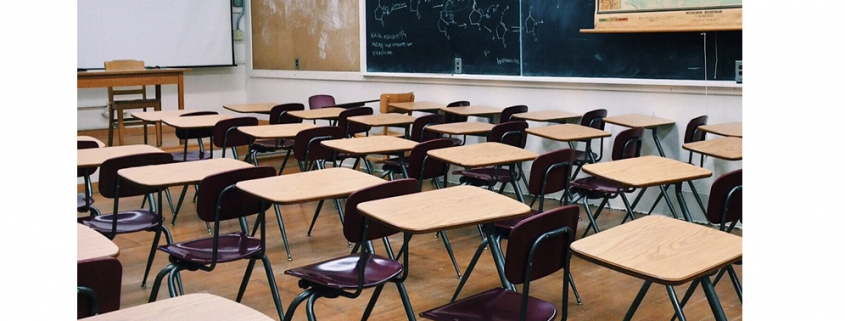The Data Surrounding Higher Education and COVID-19
Just a few short weeks ago, it would have seemed impossible for some microscopic pathogen to upend our lives as we knew it, but the novel Coronavirus has proven us breathtakingly wrong.
It has suddenly and unexpectedly changed everything we had thought was most stable and predictable in our lives, from the ways that we work to the ways we interact with one another. It’s even changed the way we learn, as colleges and universities across the nation shutter their doors.
But what is the real impact of COVID-19 on higher education? How are college students really faring in the face of the pandemic, and what can we do to support them now and in the post-pandemic life to come?
The Scramble is On
Probably the most significant challenge that schools, educators, and students alike are facing is that no one really saw this coming, so now we’re trying to figure out how to protect students’ education while also protecting their physical health. We’re having to make decisions that impact millions of students and faculty and do that with no preparation whatsoever.
To make matters worse, faculties are having to convert their classes to a forum the majority have never even used before. Before the lockdown, more than 70% of faculty in higher education had zero experience with online teaching. Now they’re being asked to convert their entire semester’s course schedule from an in-class to an online format, and they’re having to do it in a matter of weeks if not days.
For students who’ve never taken a distance learning course before, these impromptu, online, cobbled-together courses are hardly the recipe for academic success. The challenge is even greater for lab-based courses, where content mastery depends on hands-on work and laboratory applications. To solve this problem, some of the newly-minted distance ed instructors are turning to online lab simulations to help students make do until the real thing is open to them again.
Making Do
It’s not just the schools and the faculty that have been caught off guard by the sudden need to learn while under lockdown. Students are also having to hustle to make sure they have the technology they need to move their college experience online. Unfortunately, for many students, that’s not always easy, and for some, it’s downright impossible.
Studies show that large swaths of the student population: first-generation college students, community college students, immigrants, and lower-income students, typically rely on on-campus facilities to access the technology they need to do their work. When physical campuses close and the community libraries and hotspots with them, so too does the chance for many students to take their learning online.
Students in urban environments face particular risks. Even if they are able to access the technology they need to engage in distance learning, they may find it impossible to socially isolate. The need to access a hotspot or wi-fi connection might put them in unsafe proximity to other students, not to mention the millions of workers now forced to telecommute.
The Good News
America’s millions of new online learners and teachers may have a tough row to hoe, but the news isn’t all bad. Online education is by no means a new thing. By 2017, nearly 7 million students were enrolled in at least one distance education course according to a recent survey by the National Center for Education Statistics.
It isn’t as though the technology to provide a secure, user-friendly learning experience doesn’t exist. The financial industry, for example, has played a leading role in developing private, responsive, and highly-customizable technology solutions to meet practically any need a client or stakeholder may have.
The solutions used for the financial sector can be built on and modified for the online learning experience to ensure the privacy of students, educators, and institutions while providing real-time access to learning tools and content to classmates and teachers.
A New Path?
As challenging as it may be, transitioning to online learning not only offers opportunities for the present, but it may well open up new paths for the future. While our world may finally be approaching the downward slope of the curve and while we may be seeing the light at the end of the tunnel, until there’s a vaccine, we haven’t likely seen the last of COVID-19.
And even when we lay the COVID beast to rest, infectious disease, unfortunately, is a fact of human life. For students just starting to think about their career paths, this lockdown may well be the push they need to find a career that’s well-suited to this “new normal.”
For instance, careers in data science transition perfectly from onsite to at-home work, and as epidemiological superheroes like Dr. Fauci and Dr. Birx have shown, they are often involved in important, life-saving work. These are also careers that can be pursued largely, if not exclusively, online. Whether you’re a complete newbie or a veteran to the field, there is a large range of degree and certification programs available online to launch or advance your data science career.
It might be that your college-with-corona experience is pointing your life in a different direction, toward education rather than data science. With a doctorate in education, your future career path is virtually unlimited. You might find yourself teaching, researching, leading universities or developing education policy.
What matters most is that with an EdD, you can make a difference in the lives of students and teachers, just as your teachers and administrators are making a difference in your life. You can be the guiding and comforting force for students in a time of crisis and you can use your experiences today to pay it forward tomorrow.




A very nice blog. I like this blog very much. because I have the same site.